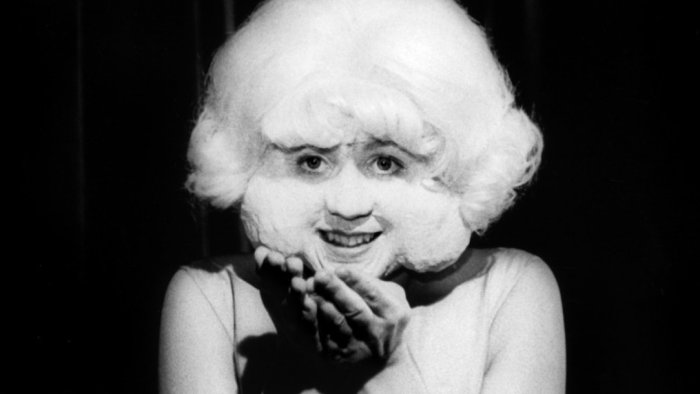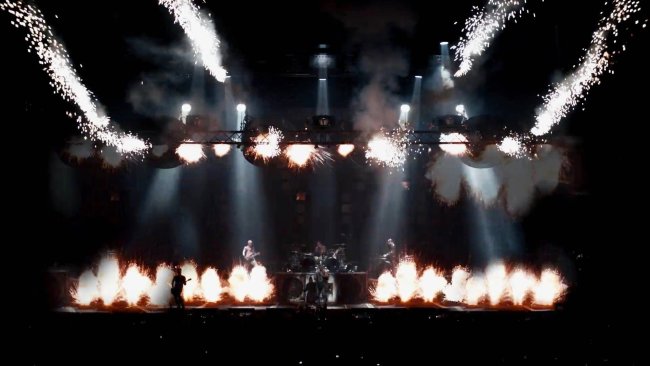Eraserhead
[…] «Eraserhead» offers to the Lynch follower and fan alike the foundations of an aesthetic that are to become familiar symbols within a “Lynchian collective unconscious”.
[…] «Eraserhead» is a film with an integrity to the basic elements of moving image, sound, and text. It unreservedly drops us into one of Henry’s foul, muddy, steaming, liquid holes, that metaphorically (if I may) devours us in reality and in dreams; there is no preferred condition.
[…] The performance of duty by the father throws into sharp relief the role of women, or more precisely, the mother.
Text: Jodie McNeilly

David Lynch filmed Eraserhead over two years in the stables at the Centre for Advanced Film Studies in Beverley Hills, where with his very first grant was left entirely unconstrained in creative vision and process. The result was a masterpiece of independent, experimental film making, stylistically derived from no other, but the source of Lynch’s own, later derivations in TV and film. Eraserhead offers to the Lynch follower and fan alike the foundations of an aesthetic that are to become familiar symbols within a “Lynchian collective unconscious”.
We can take Lynch at his word that Eraserhead is a film open to interpretation. That there is no definite theme, resolvable plot, nor predictable narrative, allows one to relax in the watching – well, kind of – and have fun with the quirkiness and grotesqueness that Lynch manages to convey through his low-fi, steam-punk, and defunct art production. While the representation of horror follows a B-grade logic and manages to deflect our fear and efface our disgust for laughter (decapitation of Henry’s plaster head, the copious amounts of oozing blood from tiny chickens, glue-gunk from the umbilical worms, or cream-corn emissions from his alien-baby’s organs after he pierces them with a pair of scissors), these representations both visual and auditory provoke at times much deeper feelings, and darker thoughts. But Lynch never proposes what it is we should feel or think. There is no apparent sub-text. Rather, he facilitates for the viewer an opening (just like the many holes that we fall through with Henry), and an exploration of kinds; something that film, or even theatre rarely imagines doing.
It is not as simple as saying that we see Lynch “the visual artist” present his medium on screen. Indeed, there are some obvious transpositions through the hand-crafting of objects, object placement, and image-making. This is most evident in the dream scene, where Henry on the tiny apron stage with footlights and red velvet curtains (emblematic of Twin Peaks’ Red Room in the Black Lodge) loses his plaster head to a mighty internal propulsion, and which rolls centre stage to be promptly doused by a river of blood spurting inelegantly from a dead tree planted in a mound of dirt, a giant version of his bedside table ornament. The composition of this mise-en-scène looks like one of his paintings, which communicate Lynch’s perceptions of everyday, non-extraordinary violence that he claims in his documentary David Lynch: The Art Life (see the review on Filmexplorer) to have strongly impressed upon his art making. But what we do witness is a film and not a moving painting.
Eraserhead is a film with an integrity to the basic elements of moving image, sound, and text. It unreservedly drops us into one of Henry’s foul, muddy, steaming, liquid holes, that metaphorically (if I may) devours us in reality and in dreams; there is no preferred condition. For Lynch, there is a strong blurring between the two. This is the first principle we must come to understand in order to experience any of his work. Sometimes we yearn for the logic of realism over the contortions of surrealism, especially when certain sequences defy what we know. But Lynch does manage to make such simple offerings in Eraserhead – and Inland Empire, his other more difficult to access film from 2006. There is something familiar in the relationship and minimal dialogue between Henry and Mary, despite the spawn of their union being a limbless, alien like creature that moans ceaselessly upon the dresser. Even the parenting scenes are reminiscent of the distress that the constant crying of a baby can provoke. Mary eventually flees, while Henry takes care of their measles infected alien-infant in endearing scenes of temperature taking, and invigilation beside a bubbling vaporiser to clear its congestion. There are moments when the mother in me wants to hold this disgusting little creature who eventually emits diabolical laughter. Lynch already a father of one child (eventually the father of four) seems to autobiographically evoke this universal sense of duty, but upturns the idea that it is a bond merely associated with mothering.
The performance of duty by the father throws into sharp relief the role of women, or more precisely, the mother. There’s the girl-next-door type, Henry’s wife Mary, a fragile mother, prone to anxious fits. And the actual girl next door who is a seductress tempting men everywhere including Henry who literally descends into a mucky adulterous hole. But there is more fear and disgust experienced by the woman who feels the edges of her vulnerability as potential mother when realising she sleeps with a man whose seed produces such aberrations. There is also Mary’s mother, the matriarch, who vicariously transcends the limits of her aging sexuality through her daughter’s, forcing herself onto Henry. Finally, there is the dream-based, platinum blonde who with plastered cheeks like an unfinished, unpainted commedia dell’arte character sings “In Heaven Everything Is Fine”. She is encountered through another hole behind the steaming radiator in Henry’s bedsitter. With her traversing shuffle and fake smile, she steps on the umbilical like worms that fall from the theatre’s ceiling: the very worms that haunt Henry in their repetition. There is a strange and unexpected purity in the fakery of her being. Could she be the ideal mother?
Failing a non-interpretive move here, there are several threads that one can eagerly and enjoyably construct from Eraserhead; I think that this is the film’s strength. As film watchers, we are too often spoon fed all we need to feel and think and so slump into passive viewing where our imaginations are under-exercised, and much worse under-“eXplored”! Eraserhead is a hallmark challenge to this apathy.
This article contains a third-party video. If you would like to watch the video, please adjust your settings.



